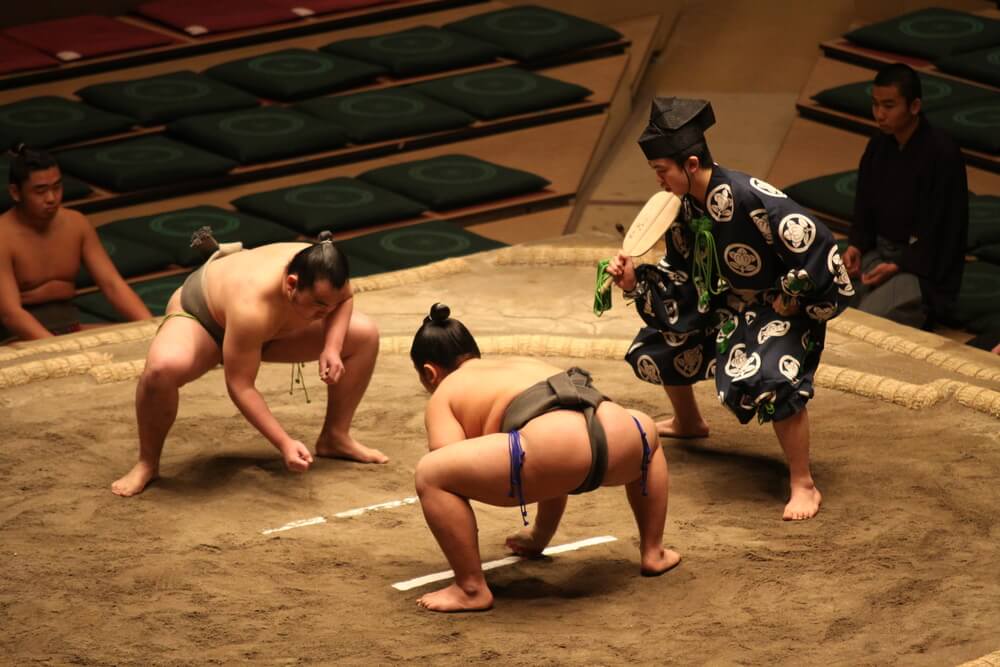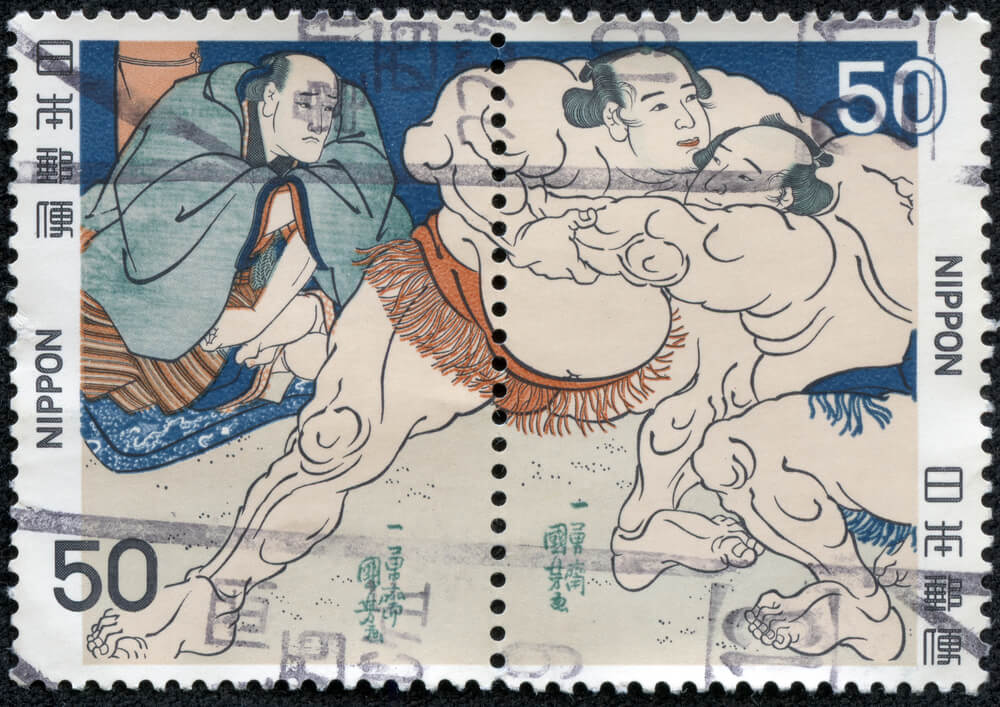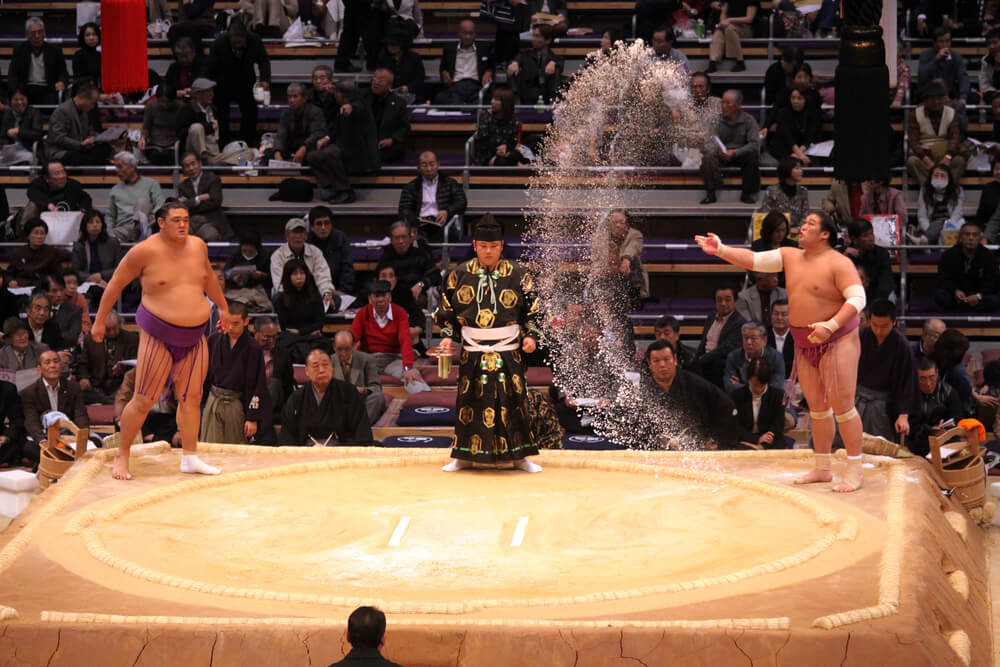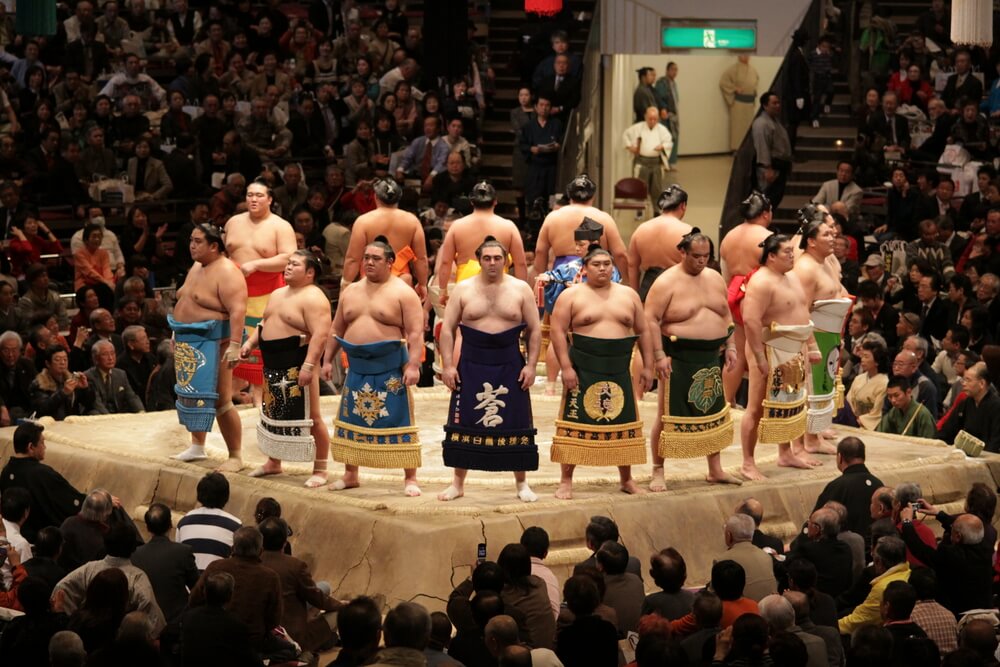Everything you need to know about Sumo tournaments in Japan!

The origins of Sumo
The history of Sumo is intimately linked to that of the country, and is intertwined with legend and tradition, dating back to the very creation of Japan.
The oldest written mention of Sumo comes from the Kojiki, the Récit des Anciens Temps in French, a book written at the beginning of the 8th century which is also the oldest copy of Japanese writing.
The Kojiki recounts a legend according to which, 2,500 years ago, the Earth God “Takemikazuchi” and the Wind God “Takeminakata” fought for control of the Japanese archipelago after a sumo wrestling match on the beaches of Izumo (where Shimane-ken is today).
Takemikazuchi won the tournament and established the royal family, from which the current emperor is said to be descended.
Legend aside, it is impossible to determine exactly when this tradition originated. It would seem that, in the beginning, Sumo was part of a sort of agricultural ritual to please the Shinto gods and obtain good harvests. The first historically recognised fight took place in 642, at the court of the emperor Kogyoku, to entertain his guests. So, all the same, it’s a long time ago!
How does a sumo wrestler live?
Sumotoris start training when they are teenagers.
They start in the morning, on an empty stomach, and practise combat movements using the heavy weight of their bodies.
They follow a precise diet, eating the equivalent of 20,000 calories a day. They eat only two meals a day, but they are very hearty. One of these is Chankonabe, a high-calorie, protein-rich chicken soup or broth with chicken, fried fish, beef, vegetables, tofu, etc. Chankonabe can be accompanied by bowls of rice (up to 10!) and is washed down with beer.
To allow their bodies to accumulate as much fat as possible, Sumo people lie down and sleep after each meal.
They live in communities, in what are known as “heyas”, a kind of training centre with gymnasiums and dormitories.
Sumotoris weigh between 90 and 160 kg and compete according to rank and weight category.
The highest rank a Sumo can reach is ‘Yokozuna’. Once promoted, the Yokozuna can never lose his title, and as he has reached the pinnacle of his career and can no longer obtain more honourable titles, he is generally expected to retire from competition.
Unfortunately, wrestlers’ health is very fragile. When wrestlers retire and stop exercising, they unfortunately develop the classic problems of obesity and diabetes.
Techniques and rituals
It’s important to realise that the Japanese consider sumo wrestlers to be demigods. Their place is therefore very important in Japanese cultural life.
The ancestral ceremony is steeped in tradition and is highly codified. Each fighter must perform certain rituals before beginning the fight.
- Clapping hands to attract the attention of the gods
- Tap the ground with your foot to chase away evil spirits
- Sprinkle salt over the dohyô (the ring) to purify the space
- Rinse your mouth out with water and wipe your body with paper towels to protect yourself from injury
- At the end of the fight, a makushita (the 3rd highest division for professional sumos) will enter the dohyô and perform a traditional dance with his bow.
Sumotoris fight on a 6m² dohyô that symbolises the sky, and above which is a suspended roof that reminds us that the arena is a sanctuary and that the fight is above all dedicated to the gods.
All they wear is a mawashi, a 6-8 metre-long strip of cloth tied around the waist. The mawashi is very practical for lifting, pushing or grabbing an opponent, but if a wrestler loses his mawashi, he is automatically disqualified.
The fight is won by pushing the opponent out of the inner circle or by making him fall on the Dohyô. It is forbidden to strike above the hips, strangle the opponent or pull his hair. A total of 82 holds are permitted.
When can I go to Japan to see a Sumo tournament?
There are 6 national tournaments in Japan. They are called “Hon-Basho”. They last 15 days and take place every odd month in 4 different cities. The tournaments start in Tokyo and then alternate with the provincial cities. Tokyo hosts three tournaments and the other three cities each host one.
So you can go and watch a tournament in :
- Tokyo: in January, May and September at the Kokugikan Sumo Hall
- Osaka: in March at the Furitsu Taiikukaikan
- Nagoya: in July at the Aichi Ken Taiikukan
- Fukuoka: in November at the Kokusai Center
How do I buy a ticket for a Sumo tournament?
Buying a ticket couldn’t be easier!
- You can get them online at www.sumo.pia.jp or www.sumo.or.jp
- On site, on the day, but only the least well-placed seats will be available
- At the Konbini, which are ticket machines (note that they are not always translated into English, so good luck).
How much does a ticket to a Sumo tournament cost?
As everywhere else, prices depend on where you are in the hall. Your ticket entitles you to attend all the fights of the day. The fights follow one another and the day can be long, generally finishing around 6/7pm. You can go out to eat, but you’ll also have everything you need on site.
There are three main price categories:
- Those closest to the central ring: around €100 (15,000 JPY)
- Boxes for 4 to 6 people on the 1st floor: between €80 and €300
- The second floor: from €15 to €100
200 audioguided tours for cities all around the world
Download



